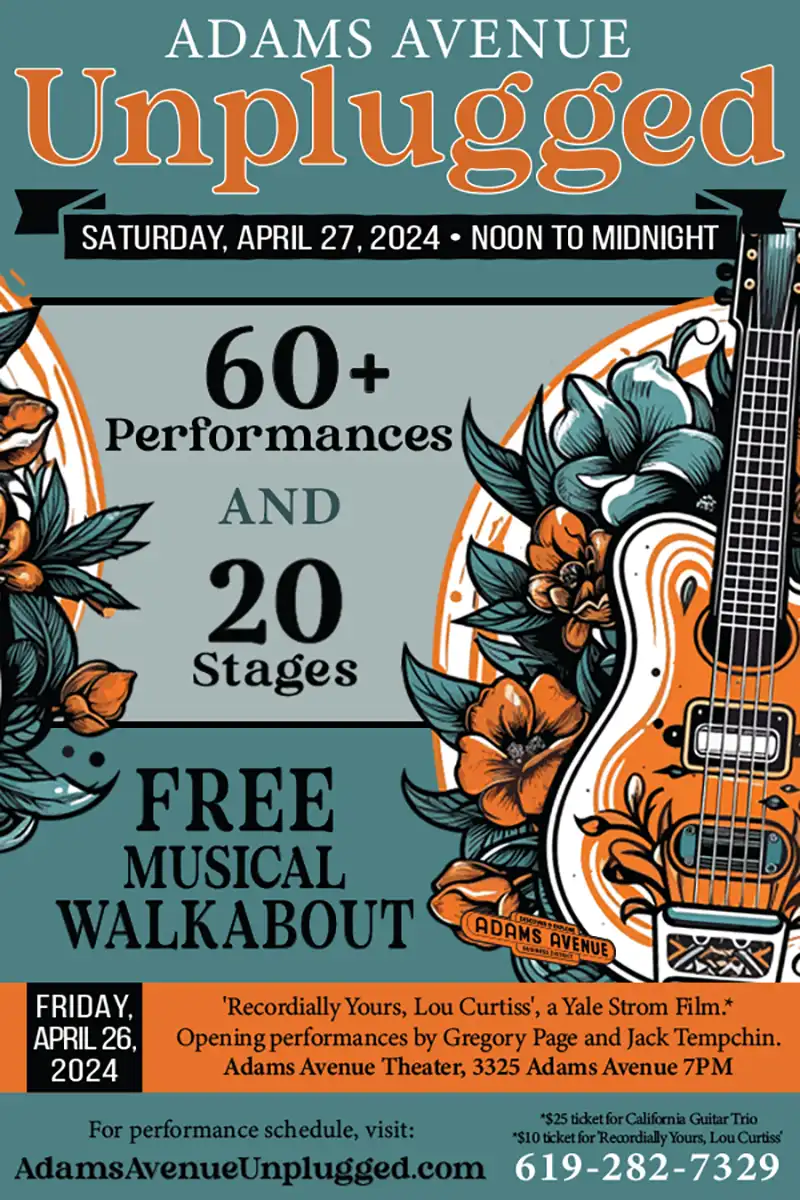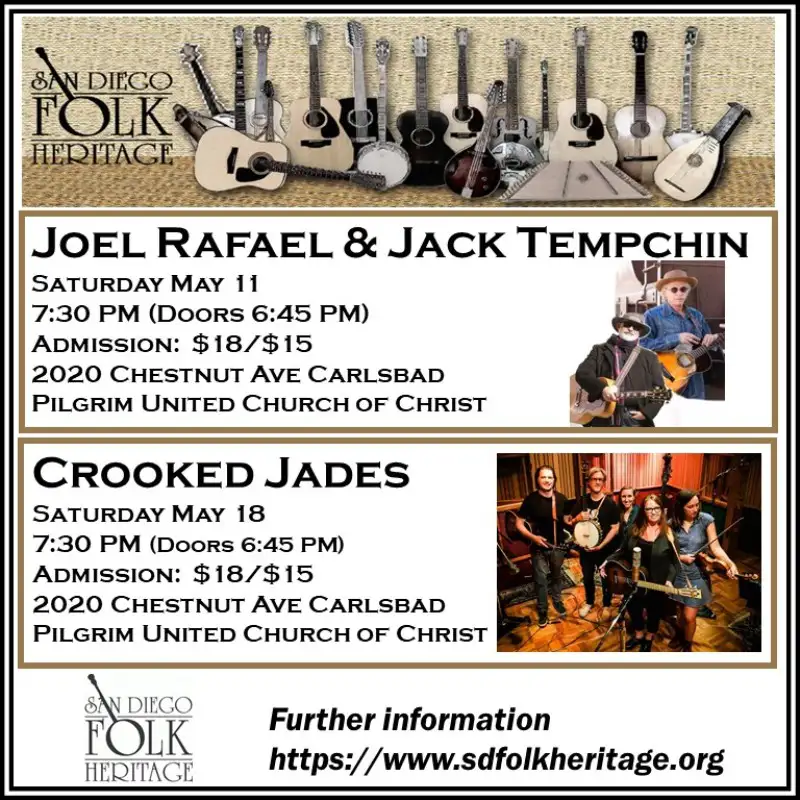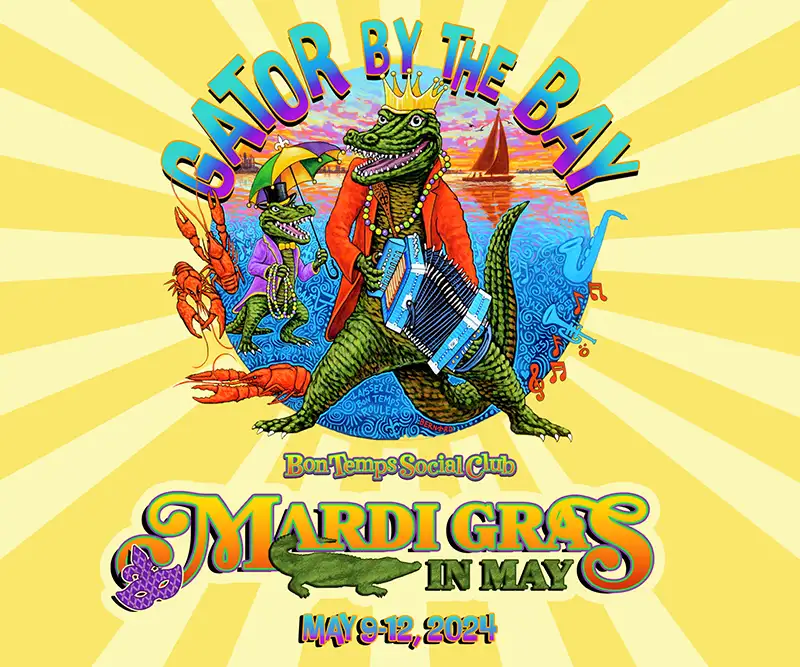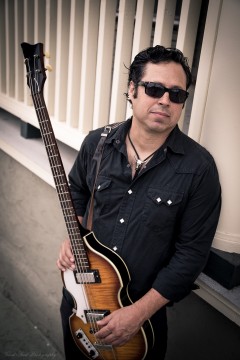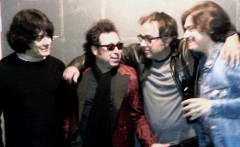Featured Stories
Rockabilly Vinyl with Action Andy
A few steps into Action Andy Rasmussen’s Spring Valley home, his back patio room is a treasury of vinyl. A few LP covers of albums he recorded are posted on the walls, while another wall has shelves with rows of carefully kept records, some with boxes containing singles. All are in superb condition and plastic sleeves, and the small room is revealed in minutes to be a special shrine when one checks out some of the titles–spotting early, rare releases by obscure British bands from the 1960s on one shelf, along with mint mono copies of 50-plus-year-old Kinks discs. On another, there are albums and singles by San Diego groups from the mid and late ’60s that even a fan of the groups at the time (yours truly) didn’t realize they recorded. Within minutes of introducing himself, Andy has laid on the table four singles by the seminal local ’60s dance group Sandi and the Accents, along with an album by the Brain Police, a local psychedelic blues group that I was a fan of in college, 48 years ago.
Rasmussen is not only a self-confessed “vinyl nut,” but a rockabilly singer/songwriter with experience in several bands, playing Tex-Mex influenced country-rockers for over two decades, including fronting Action Andy and the Hi-Tones. He has not only collected rare vinyl, but has also released everything he’s ever recorded on it (along with CDs for those who want them).
“People might think I’m crazy; I’ve heard that argument, but there’s something that comes out of vinyl that I enjoy. And I really don’t care if it’s got snaps or crackles in it–that just adds to the charm as far as I’m concerned. It’s funny how things change, because now you have to put it on a WAV file or an MP3, and maybe it’s back to vinyl.” His collection is around 1800–not huge–but it includes gems like an unreleased acetate of Tijuana Surf, and other unreleased rarities by ? and the Mysterians.
His musical journey started when his Navy dad was stationed in Corpus Christi, Texas during his junior high and high school years. In a big spring break town, he got to see a lot of bands coming through.
“Of course, Tex-Mex music was really big, along with country, Cajun, zydeco. I liked Doug Saum and the Sir Douglas Quintet and Freddy Fender. I loved a Tex-Mex accordion player named Steve Jordan. He had a patch on his eye and played psychedelic accordion,” says Rasmussen, pulling out a primo copy of an album with Jordan on the front.
He got his first bass in junior high but didn’t start playing in bands until after relocating to San Diego in the late 1980s. A lefty, he learned bass and later guitar upside down with the strings reversed (like bluesmen Coco Montoya and Eric Gales) after swapping guitars with his brother to learn.
“I was in my first band and we were called the New Breed; we were influenced by the Jam. We wanted to be just like the Jam–we went to the stores and bought our suits, shoes, the whole Mod thing. That was a lot of fun.”
He started getting the vinyl bug around that time, too. “I really enjoyed what they called garage music. I started really digging into sixties music at that point; I was always an oldies fan growing up and I really enjoyed digging a little bit deeper into other bands besides the bigger ones you hear on the radio. That’s when some friends told me about a group called the Lyrics from San Diego who played in the sixties, so I started seeking out their records. That’s another thing, too, playing music and getting into records kind of fell into place all around the same time.”
His first attempt at playing guitar and singing lead came in about 1990 with a garage-rock band, the New Breed. It wasn’t long before he and his brother, Johnny Valenzuela, decided to form a band.
“I always thought he was a really good singer, so that is when we formed the Sleepwalkers. We really wanted to do a lot of the music that we grew up with in Texas–a lot of those Tex-Mex styles, from country to rockabilly. That group went on for about 10 years, from about 1992 to 2002. We played a lot of shows and opened for a lot of headlining bands that played in San Diego: the Texas Tornados, Link Wray, Ronnie Dawson, Sleepy LaBeef, a lot of rockabilly bands and roots artists coming through town. It was my first time working as a professional musician.”
During the 1990s he also played in the Bamboras, an LA surf band, and helped found a local band, the Loons. His brother still sings with the reformed Sleepwalkers, and Rasmussen plays bass with them on occasion and produced their new album (set for release May 7).
Rasmussen points to both LaBeef and Dawson as influences, along with country legends Hank Williams, Sr. and George Jones. After a decade of steady work with the Sleepwalkers, he took a hiatus from performing music but continued to write songs.
“Sometimes I’ll have a very strong idea for a song and write it down on a scrap of paper, wake up the next day and see bits of lyrics written down. Usually I get some kind of rhythm going, a melody in my head, and it tends to make the words come easier. I used to have a hand-held tape recorder, and I’ve just got tons and tons of tapes of song ideas or developed songs. I come back to them when I’m ready, especially when it’s time to make an album.
“About 2005 I started a project, I just went into a studio one day. The album is called Haunted Honkey Tonk, which was released in 2007. I had just written so many songs that by the time I had gotten into the studio I just had a guitar and a microphone and just did about 20 songs.”
His next project involved another trip to the studio, again recording a lot of tracks, and the result was High and Lonesome, released in 2013. A regular band has formed around that group of tunes.
“I invited some friends and got a core group of players, and we did the album. I guess once we were playing, people were interested in hearing us in clubs, so we got the group together and called it Action Andy and the Hi-Tones.
“Sometimes when you lead a band, the focus can be on the namesake, but the players are just as important. I’ve got a steady group of guys. My current line-up now includes drummer Victor Penalosa, who has been friends with me since high school. Having him in the group really helps us ease back and enjoy the music. I respect him as a player, and he makes sure we don’t get too serious and keeps things simple. Jeremiah Silva is our bassist and is equally adept at guitar, horns, and keyboards. He’s really good about chord structure and changes and doesn’t sit well with anything common or typical. Our lead guitarist is Xavier Anaya, and he’s been with me from the start. As far as I’m concerned, he’s the backbone of the group. His guitar leads and overall tone defines our sound.”
High and Lonesome is a delightful, mixed platter of various styles organized as a concept album, with a sort of Passion Play of traditional life messages played out in short rockabilly and Tex-Mex passages. Rasmussen’s affected Texas drawl evokes the pompadour and duck’s ass-sporting rockabilly saints of the late ’50s, swimming in an ocean of reverb to croon catchy country on one tune, to something on the next that one might find on a 50,000-watt border radio station from 60 years ago. Anaya shines, as the arrangements on the 19 tracks vary from pounding rockers to soft ballads, from garage-band thrash to surf drums, and even some surprises like tape loops and effects elsewhere. Think of a gospel/bluegrass-themed record, but with songs that remind one of late-’50s black-jacket rockers. A re-release of the album in 2014 was, appropriately, a limited, red-vinyl edition.
One thing Rasmussen is very serious about is his art: performing. The live show is what it is all about.
“I go by Action Andy, I got that name when I was in the surf group, the Bomboras. I’d run around the stage and I’d do back flips off the amplifiers. We all got stage names and we started putting Action Andy on the records. Then afterward, I kind of stuck with it. I can still do the splits and I don’t know if I’d risk doing back flips these days, but I can still do them. That’s just part of being a front man, I want to make sure people get what they pay for. People work hard for their money; they expect something when they go out to see live music and I want to give them that type of performance.”
Rasmussen’s favorite local spots for gigs include the Belly Up Tavern and Casbah. He feels that the talent level locally is top-notch.
“In general, and I think this goes for live music overall, it would be great to see people going out more, to see and support live music. I think San Diego has a lot of great artists and performers that need an audience. It could be maybe new venues opening up, not only finding ways to attract people with the music, but trying to coordinate with other events as well. I’m not saying that there is not enough support, but I’d like to see more people coming out and making it.”
His band is getting attention, the latest San Diego Music Awards nominations included Action Andy and the Hi-Tones in the Americana band category. A new album is taking form as well.
“So far we’ve got about five tracks down; we’ll probably make a few more trips into the studio in May and hopefully get that out by summer. I think it’s going to fall into line with what I did on High and Lonesome. There are going to be more musical shifts, or shifts of style. I’m still developing ideas before I make an album; I’ll probably have about 30 or 40 songs together and then decide which of these songs are we going to use.
“You’ve got to get people to hear you. A lot of the music, the records I make, a good chunk of them just go out to a magazine or a radio show or a promoter, or a club. People who you know will spread the word. And I just say, here, take it; it doesn’t do me any good having boxes of my music that I’m not selling right now. Let’s get it out there.
“I don’t think music is meant to be hoarded in any way. I do like collecting music but I’m glad to share it just as much. In some small way I consider myself a preservationist of roots music. It’s all an art form, which I hope that younger generations will continue to pass on. That’s what I try to do with my music. Keep it going for other people to enjoy.”
https://www.facebook.com/andrewrasm


